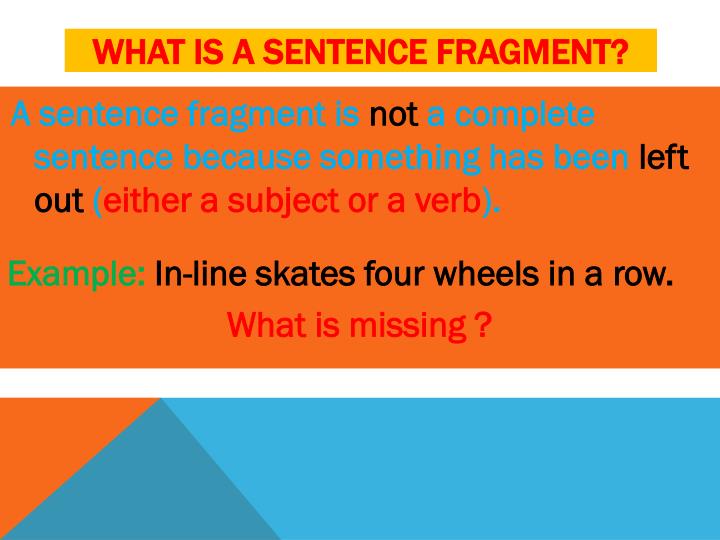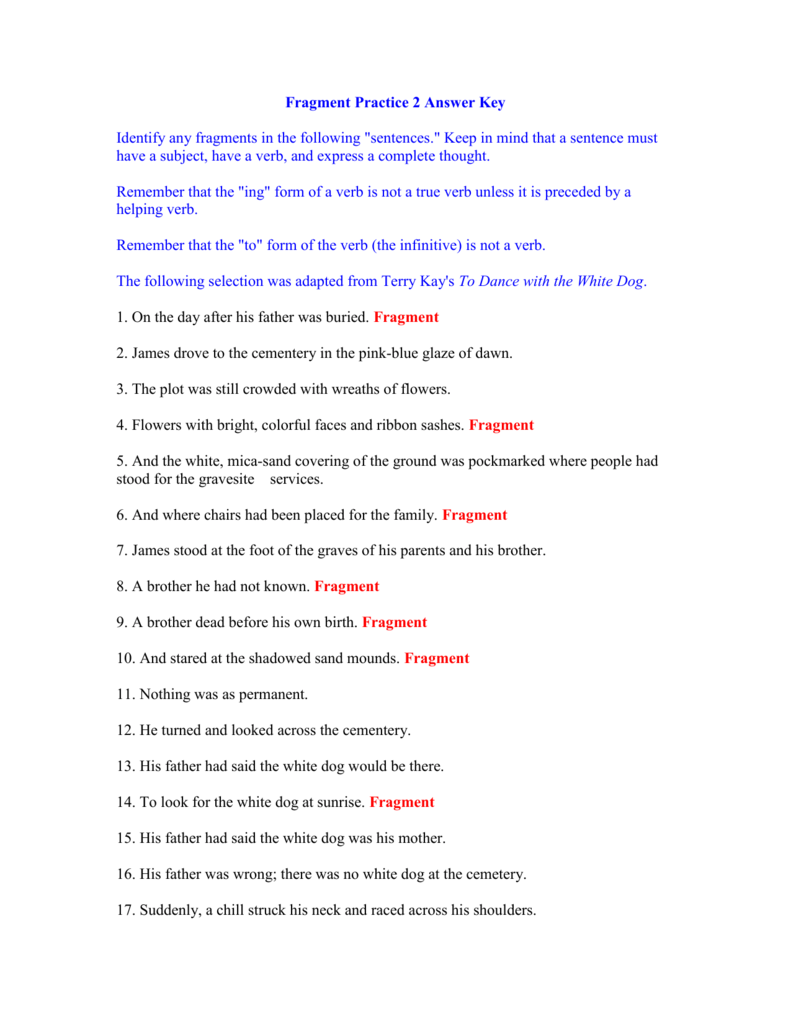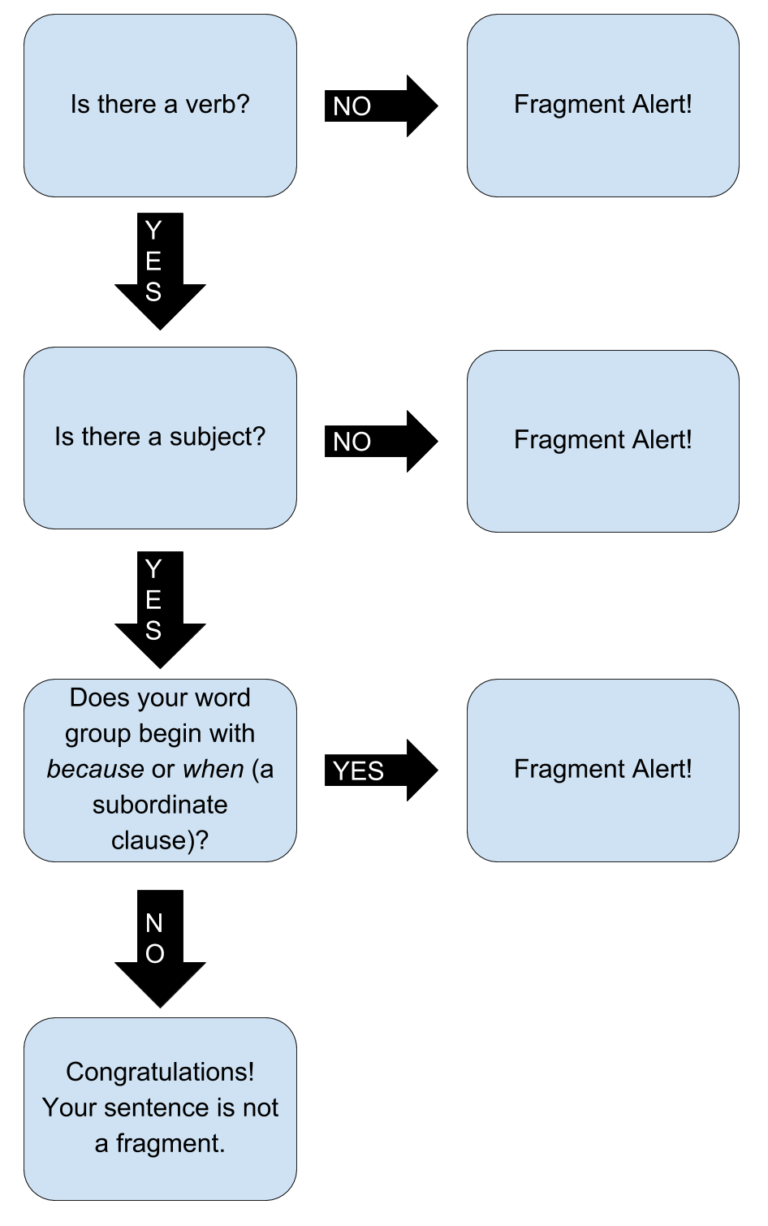
Sentence fragments are also used to create emphasis. (Reason 3) Using sentence fragments for emphasis. She brushed her foot over the leaves again. With just the surprising information to absorb, readers are given no warning of the "punchline." For example: Sentence fragments are also used to create surprise. (Reason 2) Using sentence fragments for creating surprise. Quick-fire, back-to-back sentences and sentence fragments are also known as staccato sentences. Using sentence fragments allows writers to accelerate the reading pace.
A tall figure emerged from the shadow. However, sentence fragments are also useful for relaying new information quickly because readers are presented with just the key points and not the "padding" required to create complete sentences. In the example above, the sentence fragments relay similar information. Writers can use sentence fragments to create drama. (Reason 1) Using sentence fragments for creating drama. Here are three good reasons to think more carefully about sentence fragments. Nevertheless, sentence fragments can be used in formal prose, particularly for emphasis. Sentence fragments are highly expected in verse (e.g., poetry, song lyrics) but less so in formal prose (e.g., business writing). Also, as we don't talk in perfect sentences, written dialogue is usually crammed with sentence fragments. As shown below, writers often use them deliberately for relaying information quickly (particularly when creating drama or surprise) and for emphasis. However, not all sentence fragments are errors. In all the examples above, the sentence fragments are mistakes. At 122 years old, Jeanne Louise Calment, the oldest person ever to have lived.Ĭorrect these examples More about Sentence Fragments Sentence Fragments As a Writing Tool. Hawaiian pizza created in Canada by a Greek immigrant in 1962. According to the Guinness Book of World Records, "strengths," the longest word in English with one vowel. Here are some examples of sentence fragments without verbs. Kill more people than any other creature, due to the diseases they carry.Ĭorrect these examples Sentence Fragments (Examples without a Verb) Mosquitoes are the deadliest animal in the world. Renamed Google after googol, the number one followed by 100 zeros. Google was originally called Google Backrub. The tallest man ever recorded was Robert Wadlow (1918-1940). Here are some examples of sentence fragments without subjects. Sentence Fragments (Examples without a Subject) If you punctuate a dependent clause like a sentence (like all the shaded texts above), then you have written a sentence fragment. A clause that can stand alone as a complete sentence is called an independent clause. Somerset Maugham)Ī clause that cannot stand alone as a sentence is called a dependent clause. Which is a serviceable substitute for wit. Which is a problem because I have a huge lawn. This type of sentence fragment is particularly common with clauses that start with "which." Humans are the only animals that have children on purpose with the exception of guppies. 
Stop whipping and add the vanilla essence. When the egg whites have the consistency of shaving foam.

The shaded text in each example below is a sentence fragment because it does not give a complete thought. Sentence Fragments (Examples That Do Not Give a Complete Thought) If a group of words is missing one of these traits, then it is a sentence fragment.

(Trait 2) A sentence contains a subject.(Trait 1) A sentence gives a complete thought.Remember that a sentence is a group of words that has the following three traits: Sentence Fragments (Examples without a Verb).Sentence Fragments (Examples without a Subject).Sentence Fragments (Examples That Do Not Give a Complete Thought).It is a surprise, then, that for a very long time fragments constituted ‘rubbish’ in archaeology, probably because of “the commonplace that archaeology is concerned with the rubbish of past generations” (Thoma.

Whether it is a fragment of a pot, a fragment of a house or a part (fragment) of a graveyard, it ultimately leads to the reconstruction of a fragment of our past. If anything characterises archaeological remains, it is their fragmentary nature. In this chapter, I hope to achieve three aims: (1) to convince readers that there was such a social practice as ‘deliberate fragmentation’ and that it played an important role in societies in many different time-places, including the Aegean Bronze Age (2) to discuss the relationship between fragmentation and destruction, as well as other key relational terms such as mimesis, defacement and sacrifice and (3) to problematise the relationship between fragmentation and various kinds of enchainment, using Aegean examples.








 0 kommentar(er)
0 kommentar(er)
